Geographical Location
Borneo is the third largest island in the world, located above Australia in the South China Sea. Roughly two thirds is Indonesian territory (Kalimantan), with the remaining third belonging to Malaysia. The sovereign state of Brunei, located on the north coast, comprises about 1% of Borneo’s land area. Malaysian Borneo comprises of two states, Sabah and Sarawak. We will be heading deep into the interior of Sarawak, to the village of Long Kerong.
3° 17.080’ N 115°12.876’E
The Physical Environment
Sarawak has a mix of coastal flat land, interspersed with swamps and contains large areas of lowland and highland rainforest. The area in which we will be visiting is a mountainous region crisscrossed by many rivers and is one of the last remaining pockets of primary rainforest in Sarawak. Malaysia’s land is approximately 58% forested but the rate of deforestation is now infamous and equates to roughly 68,400 ha per year or the equivalent of 11 football fields per hour. Sarawak has received the brunt of the logging and it is now estimated that 90% of the primary rainforest in what are the traditional lands of the Penan and other tribes has now been logged. We are very fortunate to be able to experience what is left of this fragile ecosystem – it is conservatively predicted that it will all be gone by 2020!
The Rainforest
Rainforests are forests characterized by high rainfall, with definitions setting minimum normal annual rainfall between 1750–2000 mm. Tropical rainforests are defined as lying between the Tropic of Cancer and the Tropic of Capricorn. The vegetative layers are split by ecologists into the Emergent layer (trees which punctuate the Canopy sporadically) Canopy layer, Understory and the Forest Floor, it is estimated that 40-75% of all species on earth are indigenous to rainforests and that there may be as many as one million species still left undiscovered.
The local rainforest is a typical combination of dense trees, plants and hanging vines that cover every square inch of habitable land. It is fairly common to see trees with diameters of up to 2 meters or so, and jungle vines or ‘Lianas’ hang from the canopy and twist their way down through the undergrowth. It is a mountainous region, punctuated by bare rocky outcrops and interlaced with numerous crystal clear jungle streams, literally teaming with fish- a truly magnificent environment and pristine rainforest.
The biodiversity of Borneo is staggering. The rainforest contains over 15,000 species of plants and trees and over 1400 species of reptiles, amphibians, birds, fish and mammals. There have been thousands and thousands of insect species recorded with new species being discovered all the time. It would be impossible to list all species here, but as a taste, of the 288 species of mammals know to exist in Borneo it is quite possible that we may come across some of the 102 species of
Bat, 61 species of Rodentia, various species of Gibbons, Macaques and Langurs, Marbled Cats, Civit Cats, Bearcats and other Cats, Mongooses, Badgers, Wild Pigs and Deer. Not to mention the Sun Bears, Eurasian Otters and Clouded Leopards. There is a good chance we’ll also meet some of the 105 species of Lizards, and a few of the resident snakes!
Such a rich population of insects, mammals and birds creates an incredible concert in the forest and the sounds are truly unforgettable.
Climate – Borneo is bisected by the
equator and so lies firmly in the tropics.
This dictates a typical tropical climate;
fairly constant year-round high
temperatures (average 23-33 deg C),
plenty of sunshine interspersed with
high doses of rainfall that combine to
create high humidity (average 85-95%
per annum).
Sarwak has two monsoons – The North
East Monsoon, which usually occurs
between November to February brings
with it heavy rainfall and the South West
Monsoon from June to October which is
usually milder. Our expedition sits
placed between these two monsoon
seasons and therefore will likely be
relatively dry, however the rainforest
creates its own microclimates and the mountainous nature of the area will be visiting will lead to orographic precipitation.
The Penan
The Penan are in indigenous group who inhabit the rainforests of interior Sarawak. Traditionally they subsisted by hunting and gathering however the last few years have seen the majority of nomadic Penan settle into permanent villages and begin to cultivate rice and staple fruit and vegetables. The Penan are still very much reliant on their knowledge and skills in the forest and are widely regarded, even by other local tribes, as masters in the forest. Their ability to navigate the complex terrain is uncanny, and their botanical and zoological knowledge of such a diverse ecosystem is staggering.
The Expedition Locations
Our expedition will take us deep into the interior of Sarawak in Malaysian Borneo. Our destination will be the village of Long Kerong, a Penan village located on a small tributary of the Selungo River. There are about twenty-five wooden houses in Long Kerong. Immediately surrounding the village are a few ‘gardens’ where the Penan now cultivate rice, Tapioca and some fruit and vegetables.
Meals:
All of the food on the expedition will be cooked outdoors over an open fire using a mixture of modern expedition techniques and traditional Penan cooking methods.
We will not have specially employed catering staff cooking for us; meals will be a communal affair with everyone taking their turn to help. Cooking will be supervised by one of Wild Human staff, all of whom hold a ‘basic food handling and hygiene’ certificate.
Breakfast will typically be cereals and dried fruit, tea and coffee
Lunch will be a simple carbohydrate staple of egg fried rice or stir-fried noodles
Dinner will consist of a cooked dish with rice or pasta
Vegetarian options will be available, if required.
*As part of the expedition we will aim to substitute our diet with traditional Penan foods hunted and gathered from the forest.
Water:
Mains water in towns is not considered safe to drink however bottled water is cheap and easily available. The local rivers and streams will be our primary source of drinking water. Our primary method of disinfection will be boiling but while on the trail we will likely also make use of filtration systems and chemical treatments. We will cover these methods in detail while on expedition.
Alcoholic Drinks:
You will be expected to pay for your own alcoholic beverages while in town. We will not be consuming alcohol while at the village or in the jungle.
Teaching & Skills
During our basecamp and jungle travel days we will immerse ourselves in the techniques associated with jungle travel and living and be fortunate to be accompanied at all times by Penan guides who know the rainforest intimately and are exceptionally skilled at living there. Our Penan guides have a working knowledge of English and are therefore capable of explaining techniques and demonstrations in their own words; they are also incredibly generous with their knowledge. The Wild Human team will teach a proportion of relevant skills as well as providing logistical guidance and ensuring the safety of the group at all times.
Emergency Field Communications:
Emergency in-country contact numbers will be available closer to the time. Wild Human has its own Iridium satellite phone.
UK Office:
Whilst on expedition, a member of the Wild Human team will act as our UK back-up in case of emergency and will be contactable 24 hrs a day on the following number – number to be released at a later date.
Personal Communications:
If you have an international roaming agreement for your mobile phone, we have no objections to you using it on expedition, providing it is used discreetly and does not affect others enjoyment of the forest. However, it is almost certain that you will only get a signal in Miri.
Expedition Health Care
Medical facilities are generally considered to be good in Malaysia but it is unlikely that facilities will be comparable to UK standards unless they are in a large city such as Kuala Lumpur.
Recommended immunisations are important to consider for all travel to South East Asia. For detailed vaccination advice, please consult your own GP and the excellent NHS web site ‘Fit for Travel’ http://www.fitfortravel.nhs.uk/destinations.aspx
As a minimum you should be up to date with all vaccinations required for normal life in the UK. Hepatitus A and Tetanus are usually advised. Sometimes advised are typhoid, diphtheria, tuberculosis, rabies, hepatitis B, and Japanese encephalitis.
The risk of rabies is small (the villagers say it is not present in their dogs) and the cost of the vaccination relatively high, so a personal decision is required here, as with Jap encephalitis. Rabies is however always fatal once symptoms develop and the vaccine does not provide complete immunity; it will buy added time to extract to a suitable medical facility.
Malaria is endemic in Sarawak and the risk is considered relatively high. It is recommended that a suitable anti-malarial is taken. Please consult your GP on this. If you plan to use an anti- malarial that you have not used before, it is also recommended that a trial course be taken to prevent any adverse side effects spoiling your trip. The mosquito count in this forest is relatively small compared to some areas and we will take added malarial precautions with the use of insect repellent and mosquito nets.
Medical support network:
Expedition first-aid cover will be provided by the Wild Human team, who have been trained in expedition first aid and ‘Advanced Medicine for Remote Foreign Travel’ by Wilderness Medical Trainingand Wilderness Emergency Medical Techniciancertificates byWEMSI. They also hold HSE recognised first aid certificates.
The expedition will carry a very comprehensive medical first aid pack. Throughout the expedition we will have a ‘reasonably’ reliable communications system and will be in ‘reasonable’ proximity to medical care.
Insurance:
You must have adequate travel insurance to join this expedition. Please make sure that your policy covers the type of activities that we will be partaking in; specifically small boat travel and hiking in remote areas. We will ask for your policy details prior to departure.
Travel documents and visas:
You will require a passport that is valid for at least 6 months after your intended departure date to be granted entry into Malaysia and proof of your return journey (airline ticket). Nationals from all EU countries and New Zealand do not need to arrange visas in advance to visit Malaysia. You will be granted an initial 90 days visa stamp on entry to Malaysia, free of charge.
Please note:
It is advisable to make copies of the relevant pages of your passport, your flight tickets, your traveller’s cheque receipt slips (very hard to cash in Miri, especially during the weekend) and your travel insurance policy in case the originals get lost.
Keep one set of copies with you, one set in your luggage and leave one set with a friend or family member at home. If possible, scan these documents, and email them to yourself, using an email address with sufficient memory storage.
Physical Conditioning:
You need to be in reasonable shape. Anyone who is seriously overweight or has limited flexibility will discover some real handicaps due to the nature of sleeping in hammocks and the challenging nature of the mountainous terrain we will be travelling through. Attitude is everything. If you really want to be there, have the temperament to attend to fussy little details, and are prepared to deal with temporary discomfort at times, you will enjoy the jungle for its energy and wonder.
Prior to the trip we recommend that you begin a light aerobic fitness-training regime, working out at least three times a week. If possible, some light strength training for the major muscle groups in the legs would be a bonus, as our trek will require a certain level of leg strength. A few moderate hill walks with a pack would be ideal training.
This will greatly improve your enjoyment of the course. If you are in any doubt about your ability to cope with a cardiovascular workout program, please consult your GP.
Baggage Security:
With regards to flying with a rucksack, I just make sure that all of the bags straps are pulled tight and tucked it. If you are worried about your packing being damaged, then you could buy a flight bag to put your rucksack into. The draw-back is the extra expense, but the pros are as follows – A single padlock (on the flight bag) seals your whole rucksack & all it’s pockets (make sure you buy one in which the zips cannot be pulled apart even while the two zips are locked together; this is possible on many designs!); all the straps on the rucksack are safely packed away. It’s very common for rucksack straps to get caught on something & tear off while the baggage handlers are moving it around. They also fold up to a very small size for easy storage.
It is fine to travel with cutting tools in your main pack providing they are stored securely in a bag (not strapped onto) and that they are not readily accessible. Prior to the expedition we will mail you a letter, so that if challenged, you should not be viewed as being in ‘possession of an offensive weapon in a public place’, and that the you are carrying greenwood working tools (axe / knife / crooked knife) for ‘environmental / hobby’ purposes (as per Section 139 of the Criminal Justice Act 1988). You should also have your receipt of payment or briefing pack for the expedition, to prove your reason for carrying these tools is legitimate.
Spending money:
You will have no need for spending money in the jungle, but please some cash for shopping and beers in Miri and there will be some wonderful Penan crafts for sale while at the village. You will eat well in Miri for less than £2 / meal.
The exchange rate is roughly £1 = 5 MYR (Malaysian Ringgits), for current exchange rates visit
www.xe.com
Major credit and debit cards, including the Visa Cash Passport Card, are widely accepted in Malaysia. You can also access your bank account using ATMs, which are ubiquitous.
Time difference and jet lag:
GMT +8
Hung-over (surely not), sleep-deprived, run down or just plain worn out before you begin your travel, chances are greater that you will be more susceptible to jet lag.
Although jet lag cannot be cured, there are some tips that may help to reduce the severity of symptoms. Consider the following before, during or after your next scheduled air flight:
- Avoid alcohol and caffeine just before and during your flight. Both alcohol and caffeine have diuretic properties, which means that they cause you to lose water and make you dehydrated. Also, alcohol causes drowsiness and can contribute to the sluggish feeling experienced by many travellers.
- Reset your watch to the time zone that you are travelling to. This lets you start thinking according to your arrival destination’s local time before you even arrive.
- Create as dark an environment on the plane as possible. Bright lights have a strong effect on a person’s body clock. Use eyeshades and earplugs to help block out the in- flight distractions and convince your body that it is dark. Closing the window shade and turning off the overhead cabin lights may also help. Sleep on the plane if your flight has an early morning arrival time.
- Wear comfortable clothing and shoes. If you experience mild swelling, it will help to have loose-fitting clothing and comfortable shoes.
- Get adequate rest before your flight. By starting your trip well rested, you will not be playing as much “catch-up” when you arrive at your destination. Likewise, when you return, try to schedule a day of rest before returning to work.
- Walk around and do isometric exercises (simply contract and relax as many muscle groups as possible while seated) while in flight. This will improve your circulation, helping promote an increased level of alertness and reduce the chance of swelling in other body regions.
- Drink plenty of fluids. Drinking lots of water and juices will help you to stay well hydrated.
- If possible, try to wait until the local bedtime to sleep. You will sleep better and be less likely to suffer insomnia than if you take a nap upon arriving. A daytime flight may help
since nighttime flights may exacerbate jet lag.
- Power:
Plugs in Miri are the same as the UK, so no adaptors required. There are a few generators in the village but use will be very limited. We suggest you aim to be non-power dependent. Fuel is expensive and hard to come by for the Penan and with the warm climate, modern batteries should hold their charge well. If in doubt, bring spares.
Expedition Travel & Transport How to get there:
Flights to Miri, Malaysia are NOT included in the cost of the course – you will need to book your own flights independently.
I would recommend folks get the flight that lands at 12.40, so that would be flying out of Heathrow at 10am on the 15th and arriving in Miri at 12.40pm on the 16th – we start in the late afternoon of the 16th. Coming in a day or so early is very beneficial to getting over jet-lag and getting used to the heat and humidity.
The Expedition Assembly Point:
We will meet everyone at a specified guesthouse in Miri at 16:00 on the 16th March 2019.
We will be staying at Dillenia.
Late arrivals:
Please inform Ben asap on email or via sms – contact details on booking
Responsible tourism and recycling on expedition:
- We will not be burning or burying plastics on expedition, tins will be burned, crushed and binned. All tins and plastic waste will be carried out where possible.
- We recommend that you use re-chargeable batteries.
Carbon Neutrality:
Aviation is one of the fastest growing sources of greenhouse gas emissions in the world and through flying to overseas destinations we are contributing to the problem of climate change.
Climate Care is an organisation that invests in projects that reduce the amount of greenhouse gases in the atmosphere such as renewable energy, energy efficiency and reforestation projects. The first two displace fossil fuels in the energy generation mix and the latter absorb carbon dioxide.
For example, through every hour in a Boeing 747 you personally contribute an equivalent of 123 kg Of C02 to the atmosphere, which would cost £ 0:80 to offset. If you would like to take part in this scheme and work out your carbon deficit, please contact –
Climate Care, 58 Church Way, Oxford OX4 4EF.
Tel: 01865-777770. Email: [email protected]. Website: www.co2.org.
Recommended Reading
To help get you in the correct mind set for the expedition, we would recommend that you read some of the following books –
- Jungle Travel and Survival by John Walden. The best all round jungle survival book. John Walden is a physician with extensive experience in the Amazon basin.
- The Wayfinders by Wade Davis. An anthropologist’s musings about vanishing indigenous cultures and their different ontological perspectives.
- Stranger in the Forest by Eric Hansen. An account of the author’s 7 month, 4000km long journey on foot through Borneo in the 1980’s in which he used primarily Penan guides. A fascinating story as well as containing extensive descriptions of the Penan and their vanishing nomadic lifestyle.
- A Naturalist on the River Amazons by Henry Walter Bates. An account of jungle exploration in the mid 19th Bates was accompanied by A. R. Wallace, famous for his contributions to the Darwinian Theory of Evolution author of the book below
- The Malay Archipelago by Alfred Russell Wallace. Includes descriptions of 19th Century travel in Sarawak, of the flora and fauna and local people of the region. A classic.
Check out this wonderful documentary by Ross Harrison- ‘Sunset over Selungo’ filmed at Long Kerong in 2014 to see what village life is like

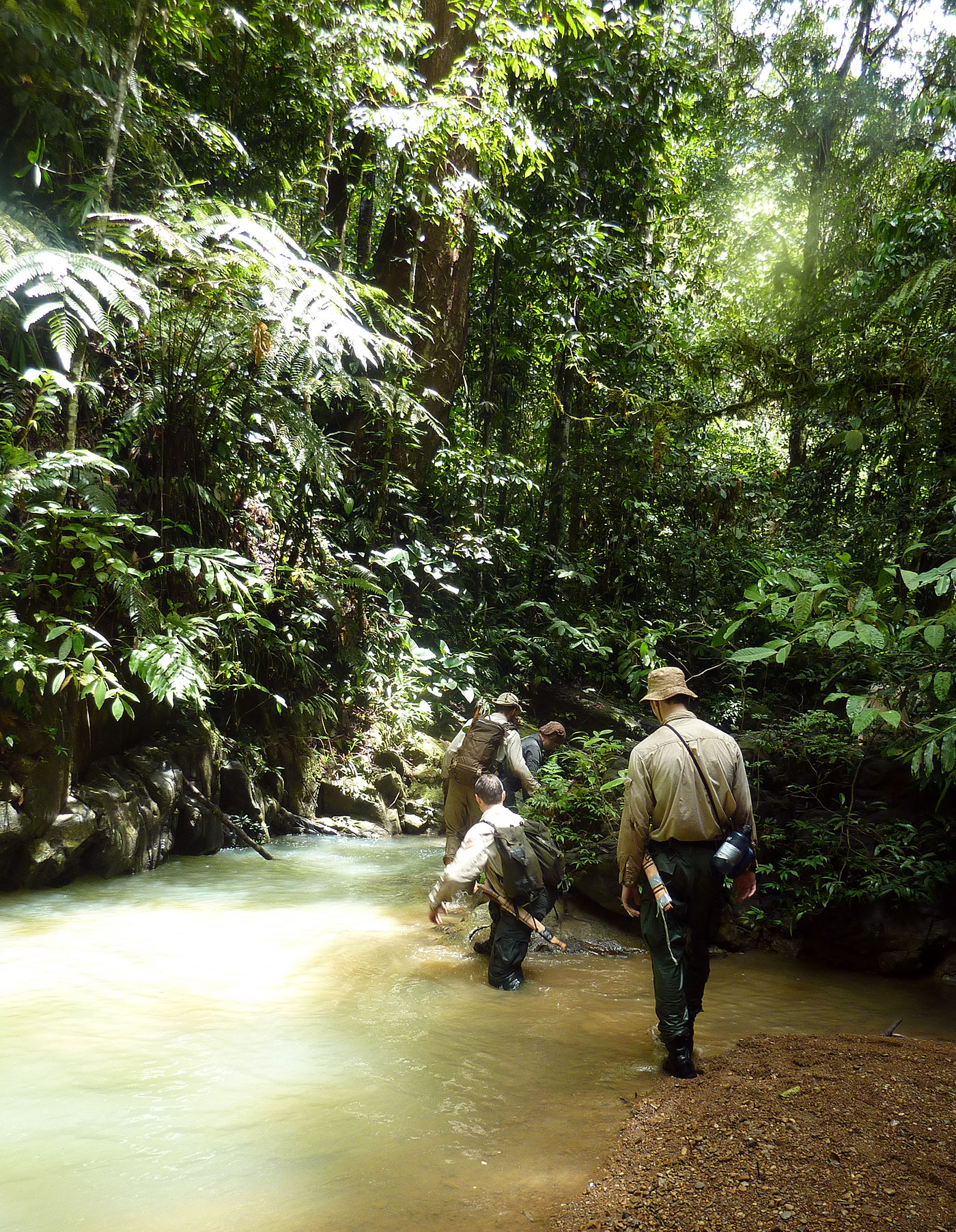
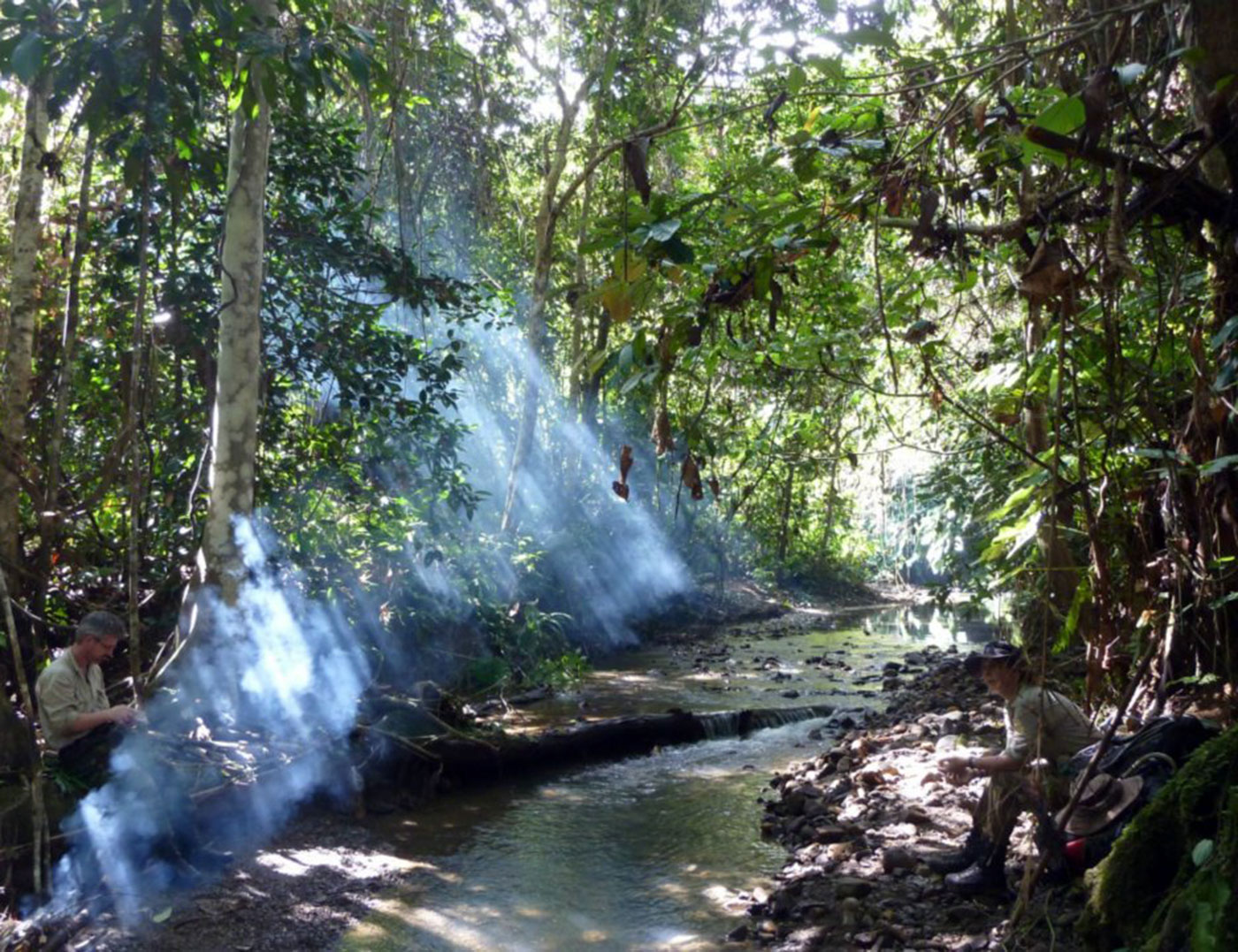
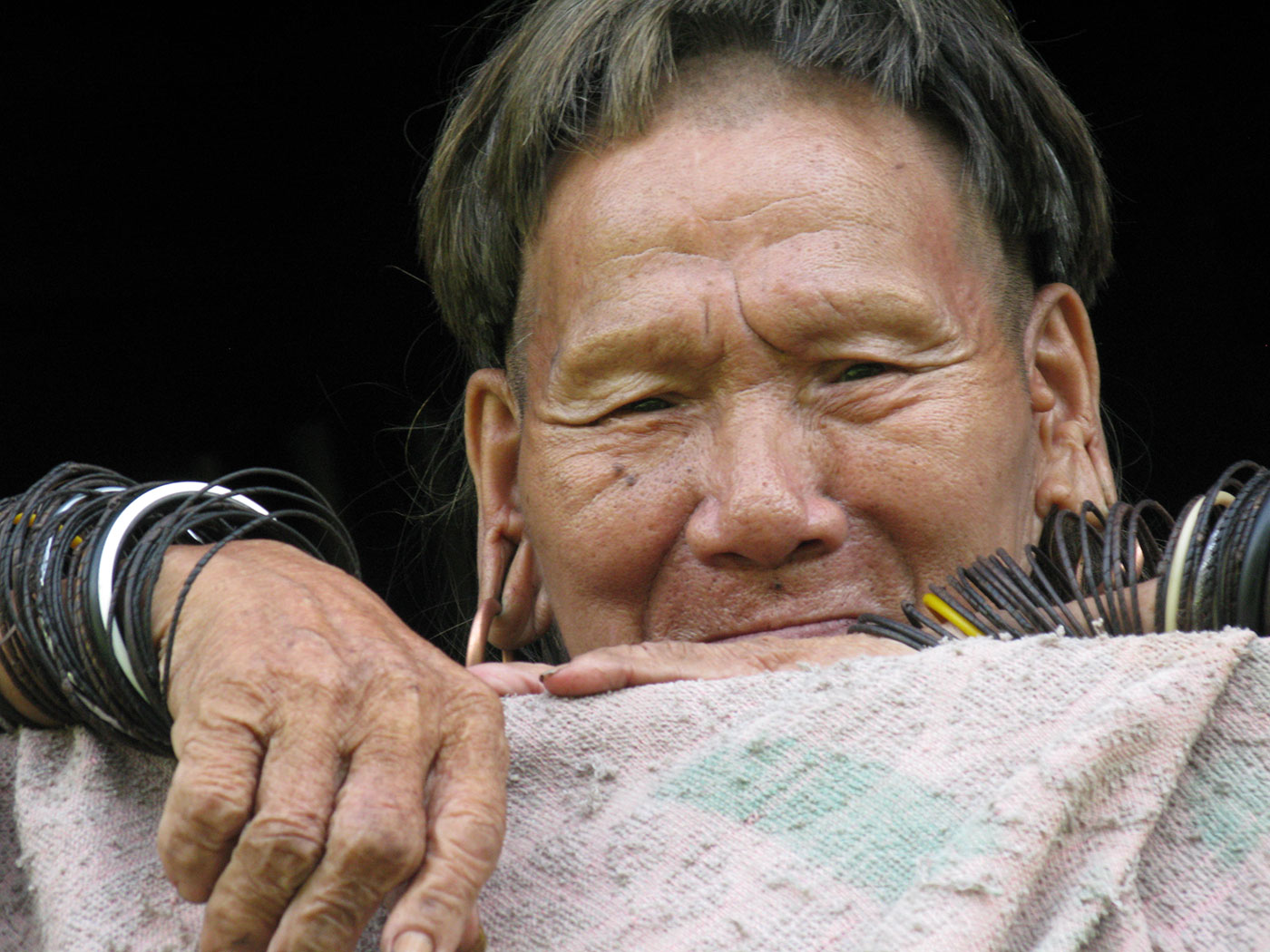
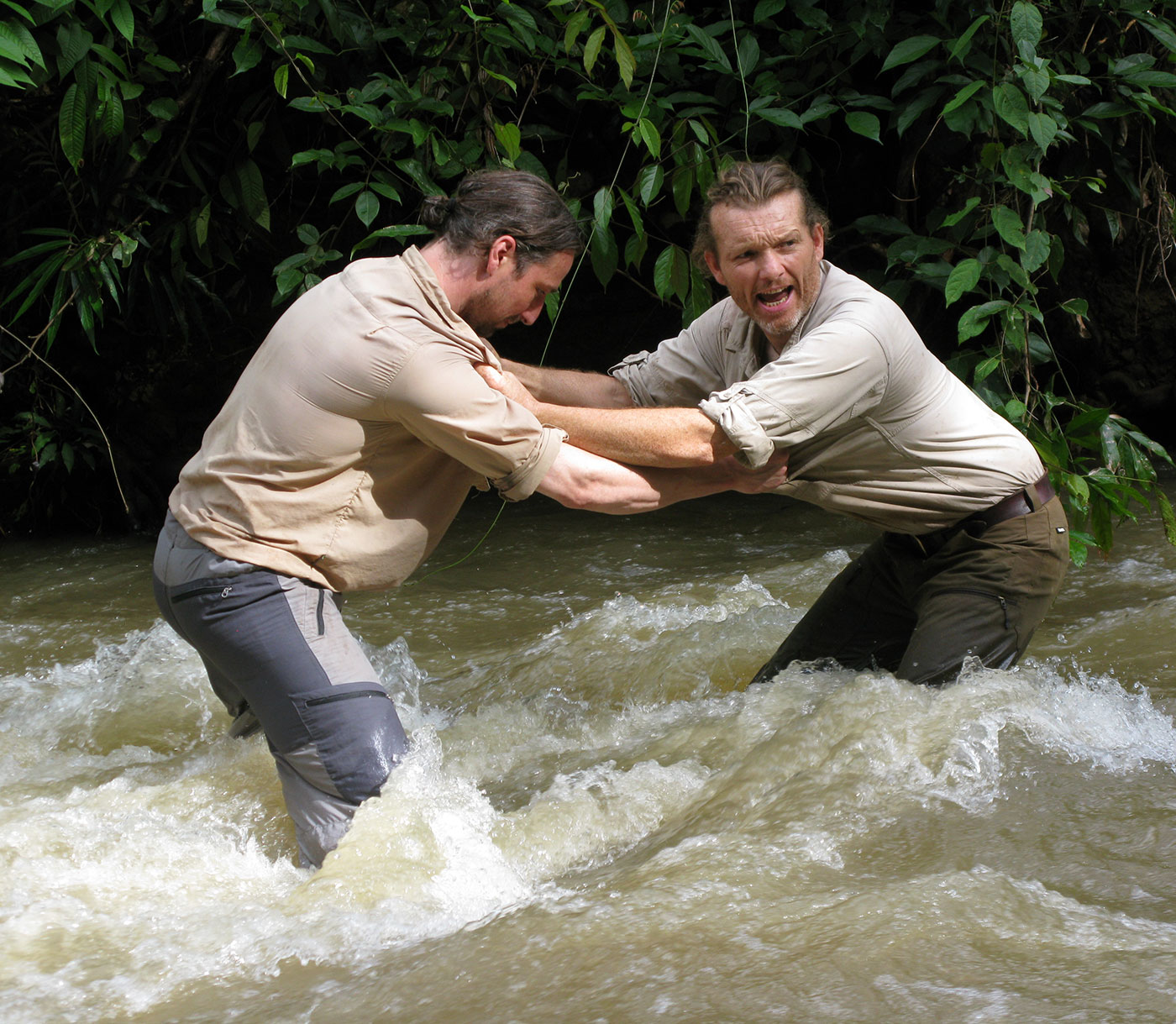
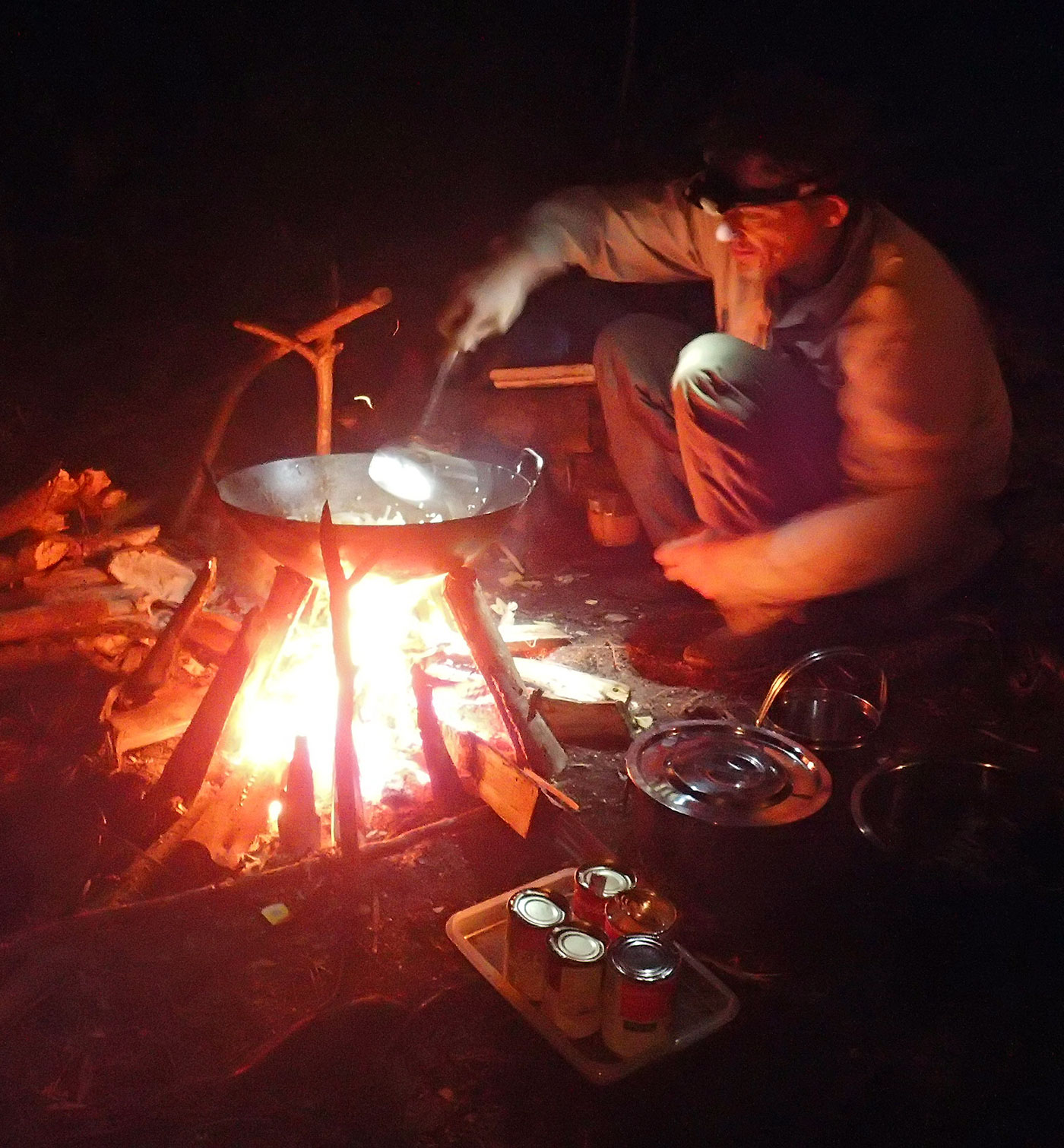
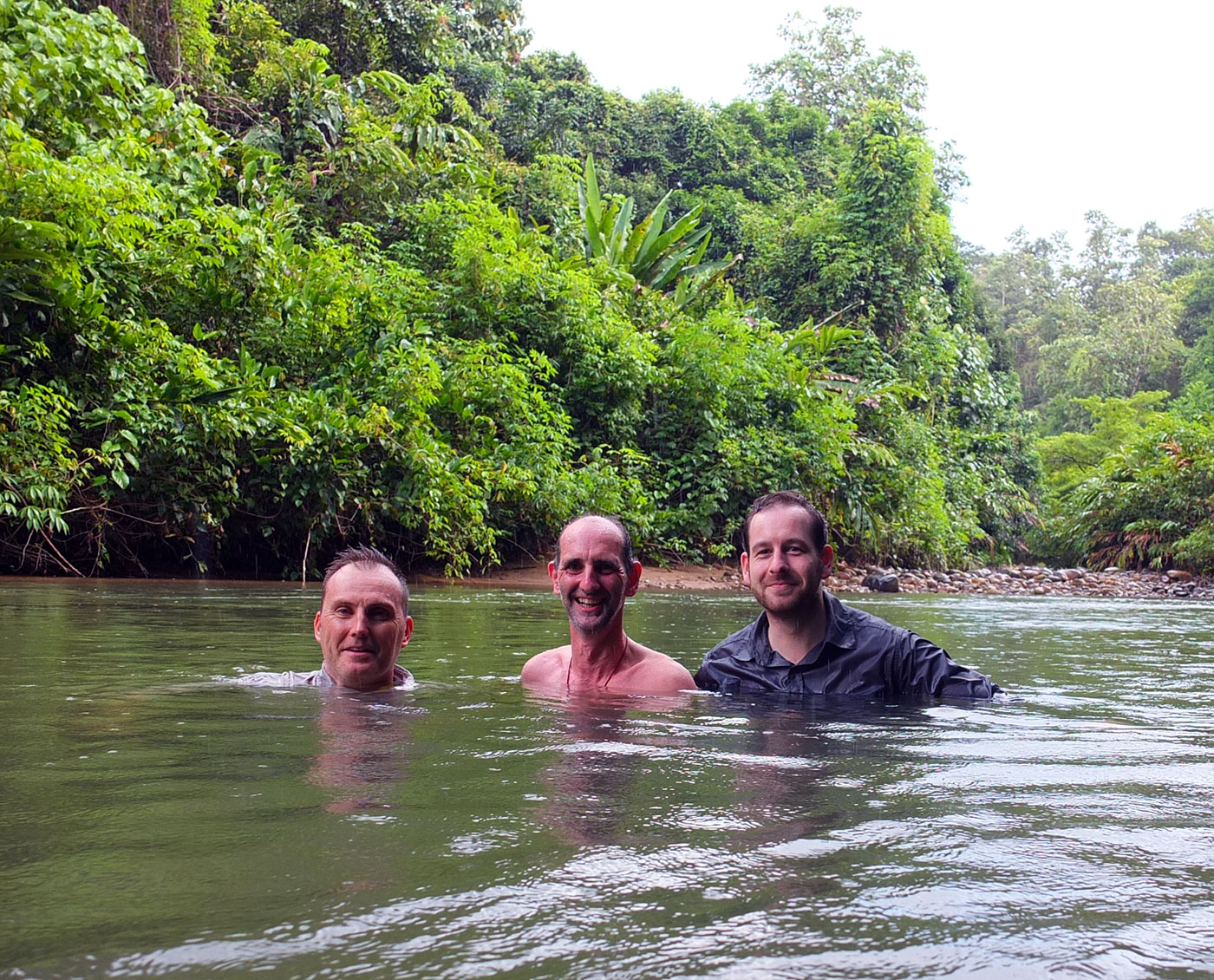
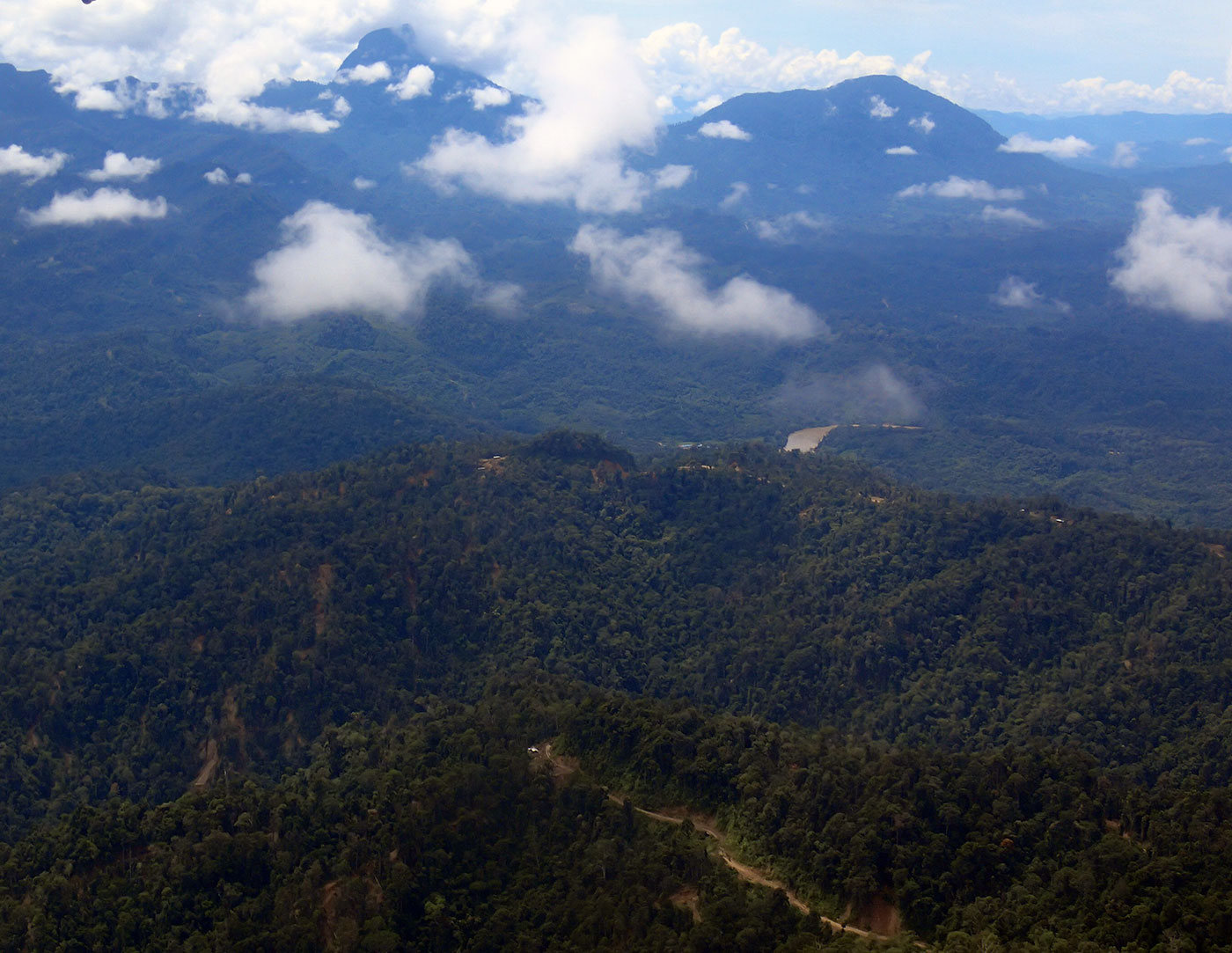
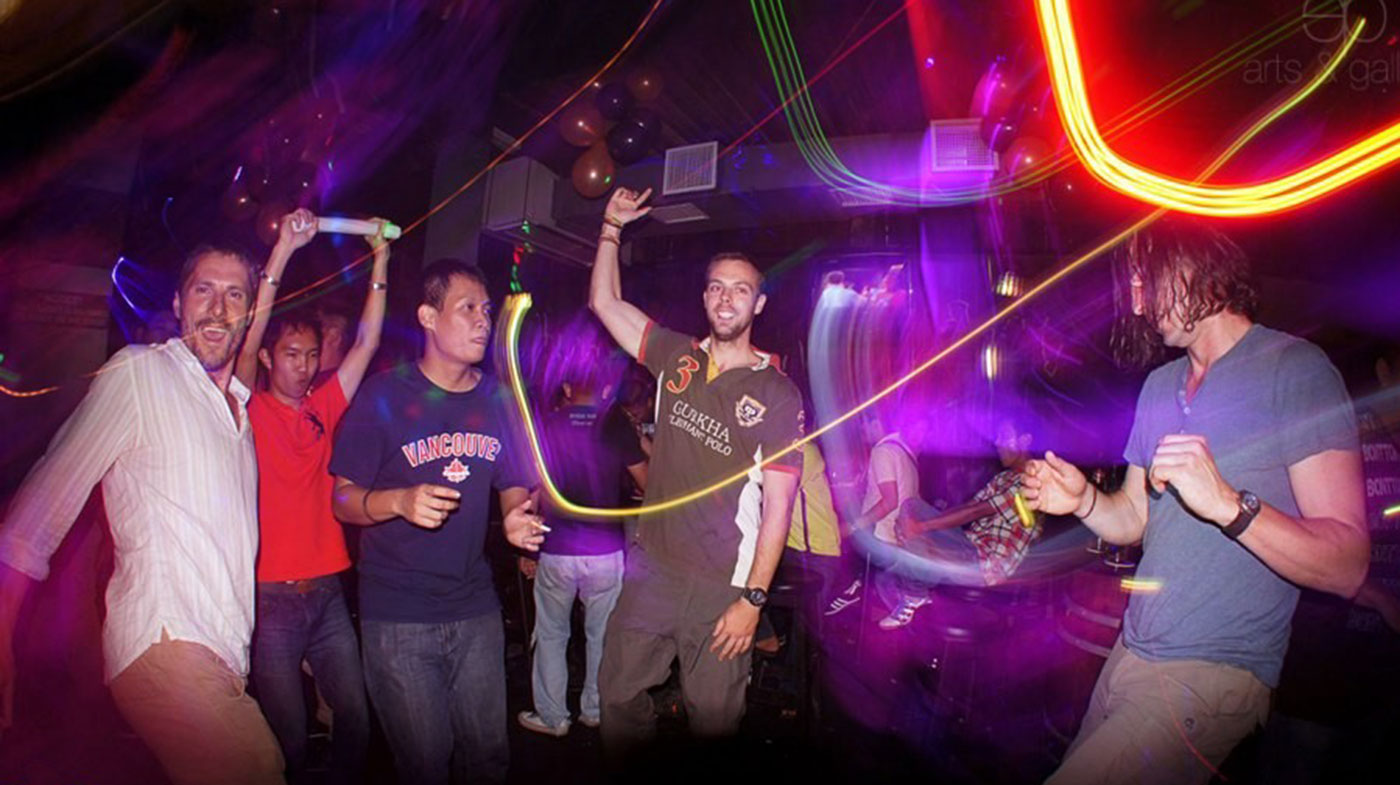
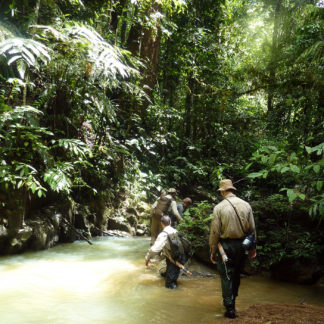
Reviews
There are no reviews yet.